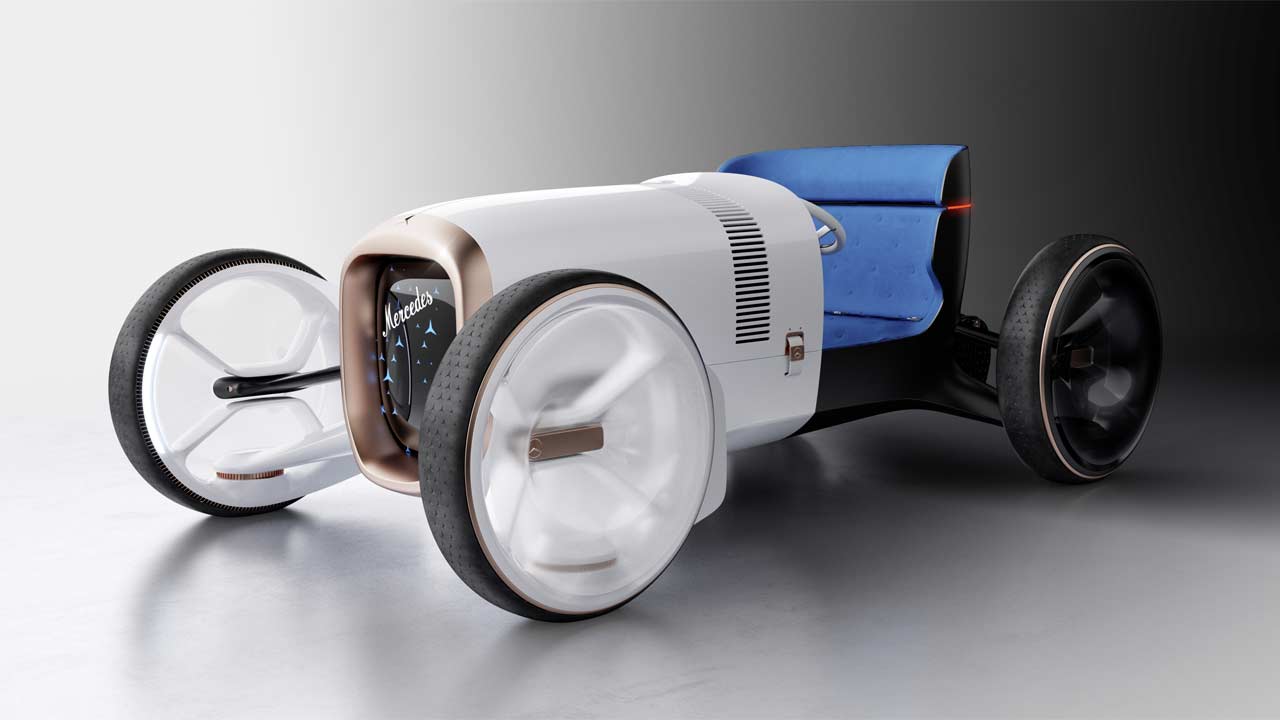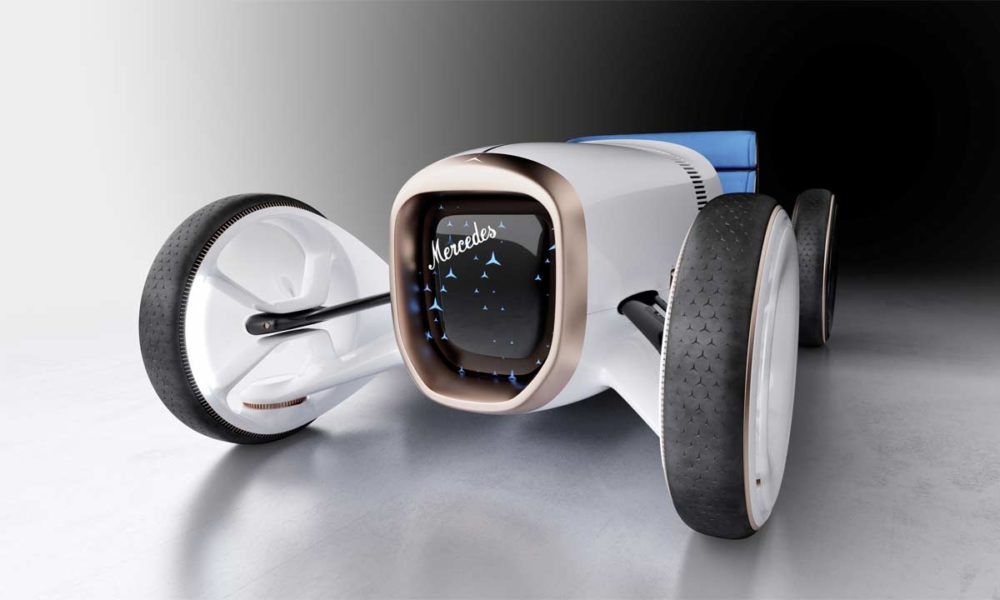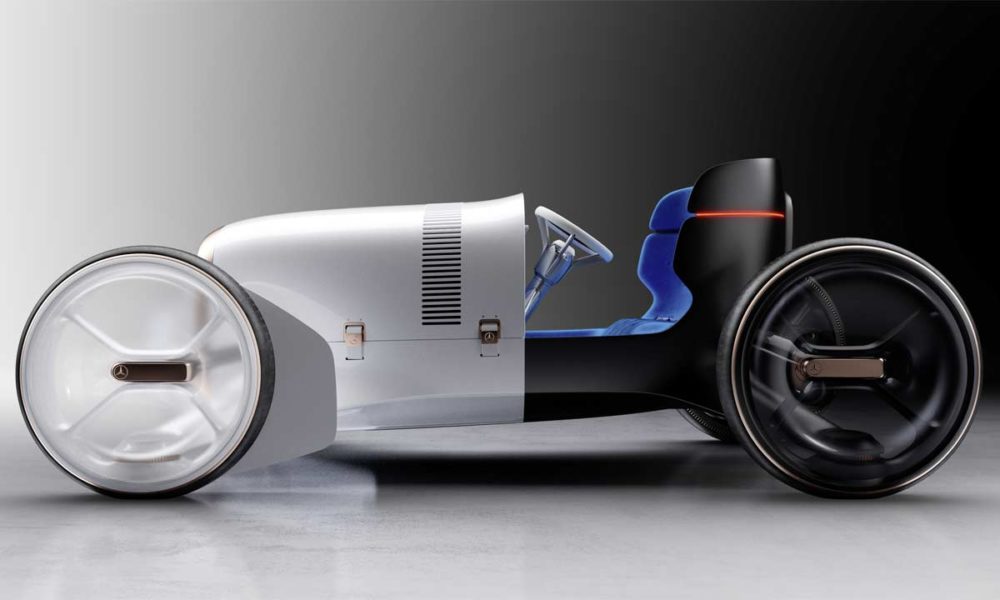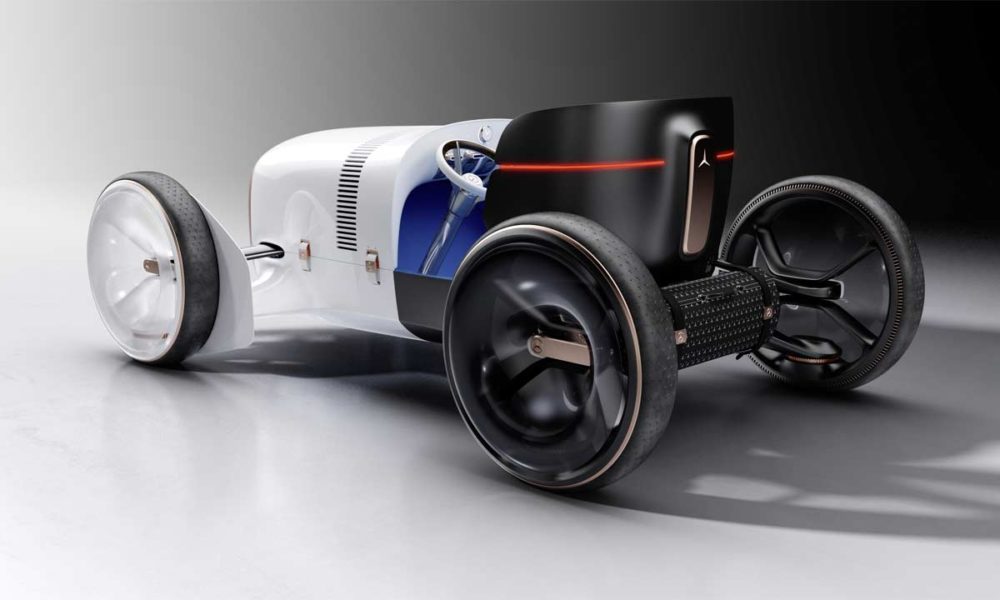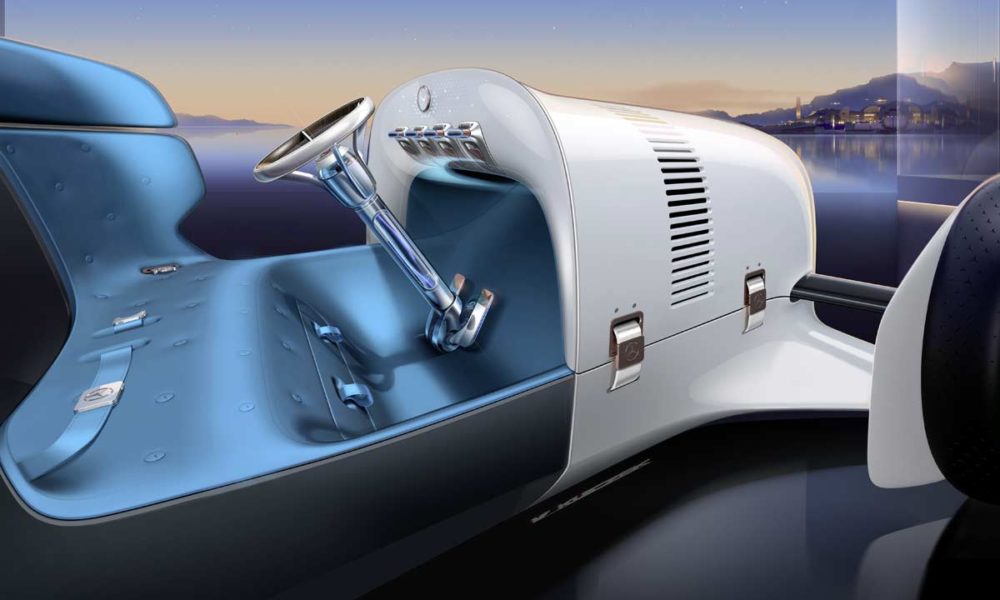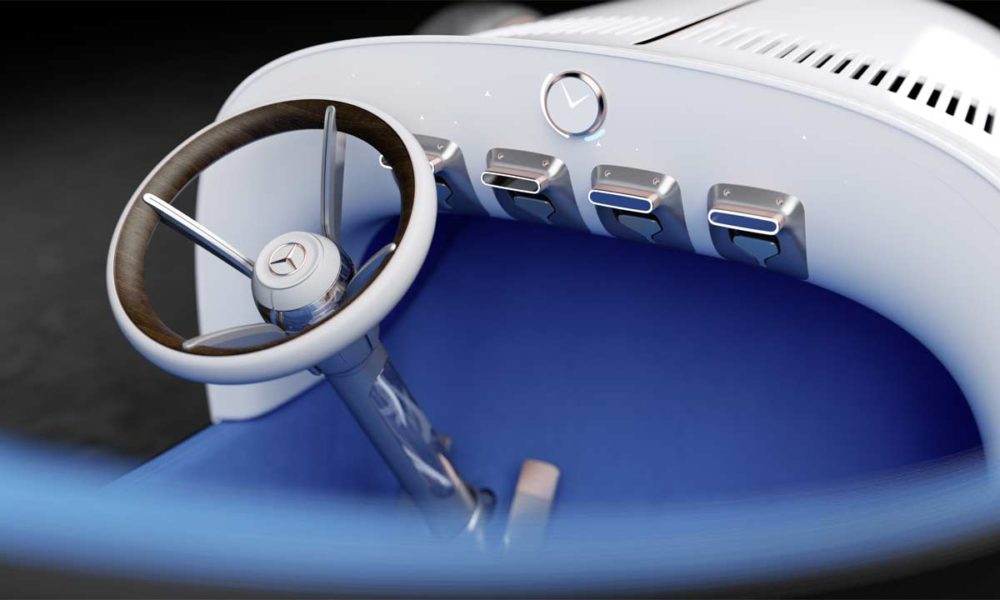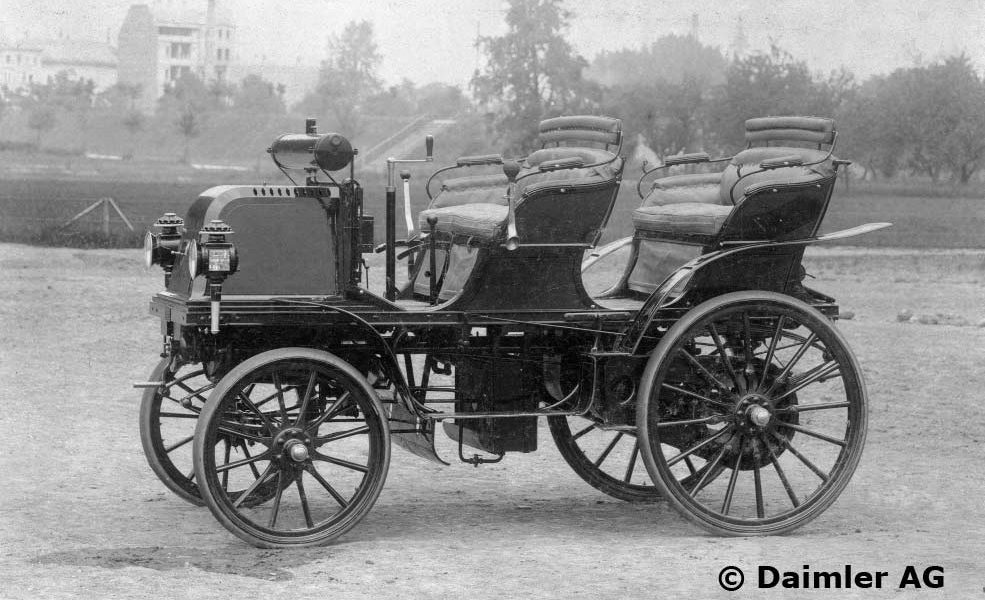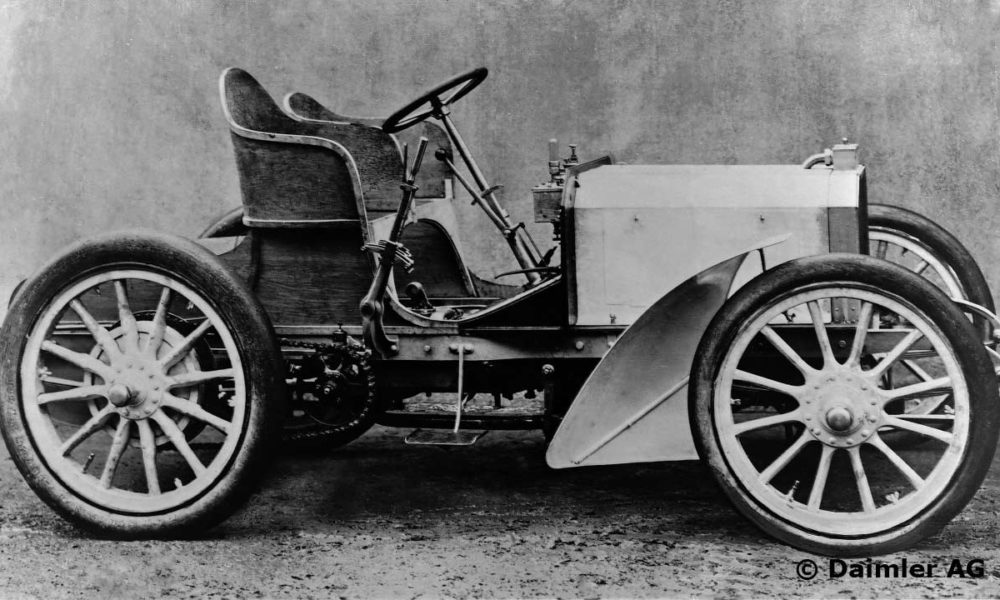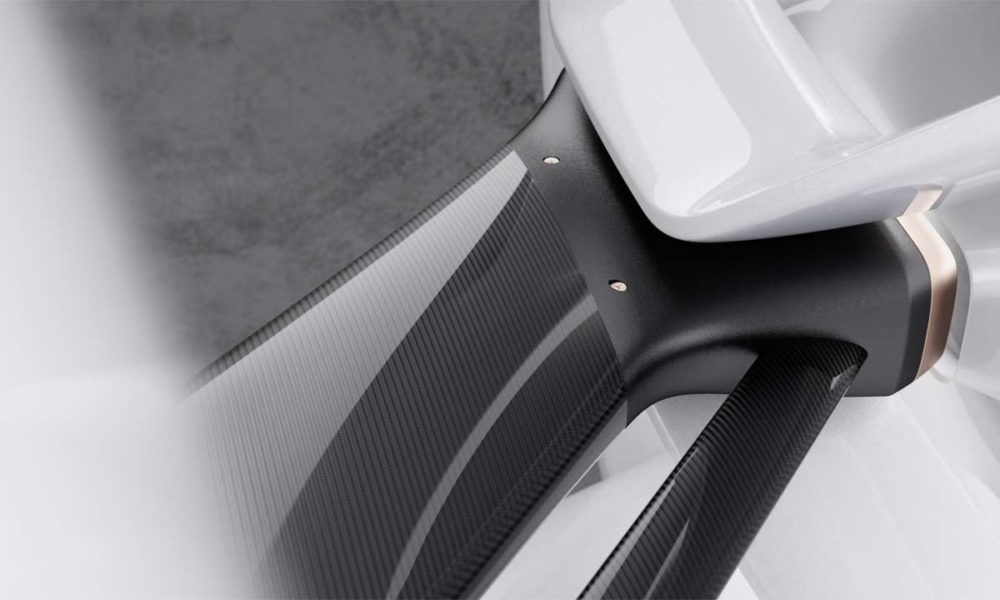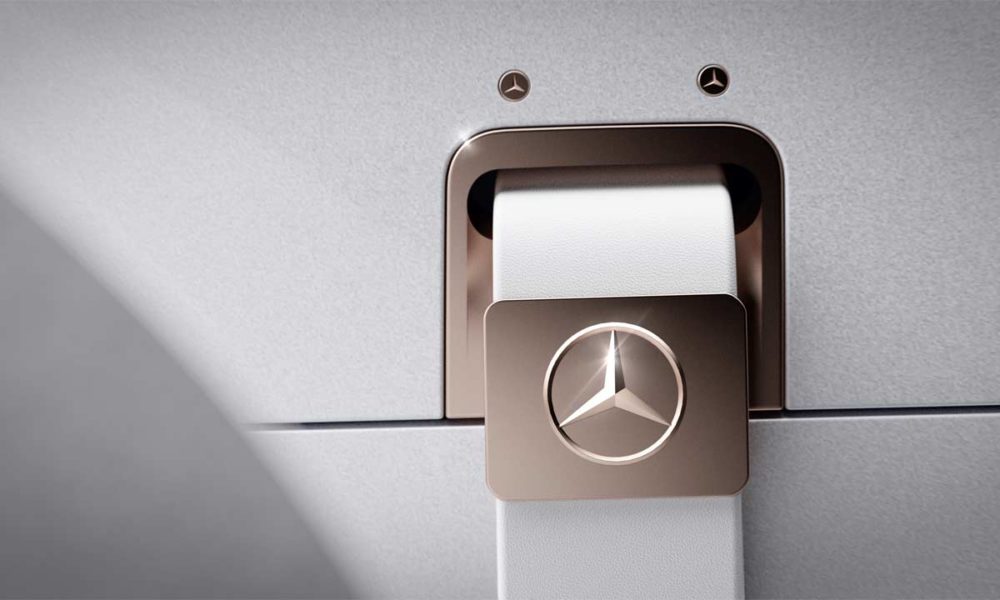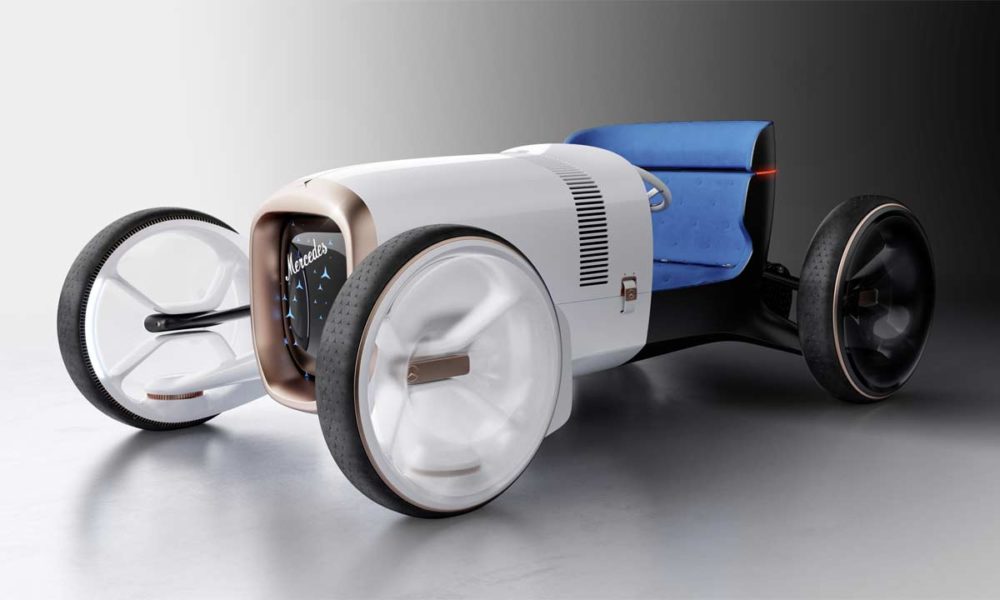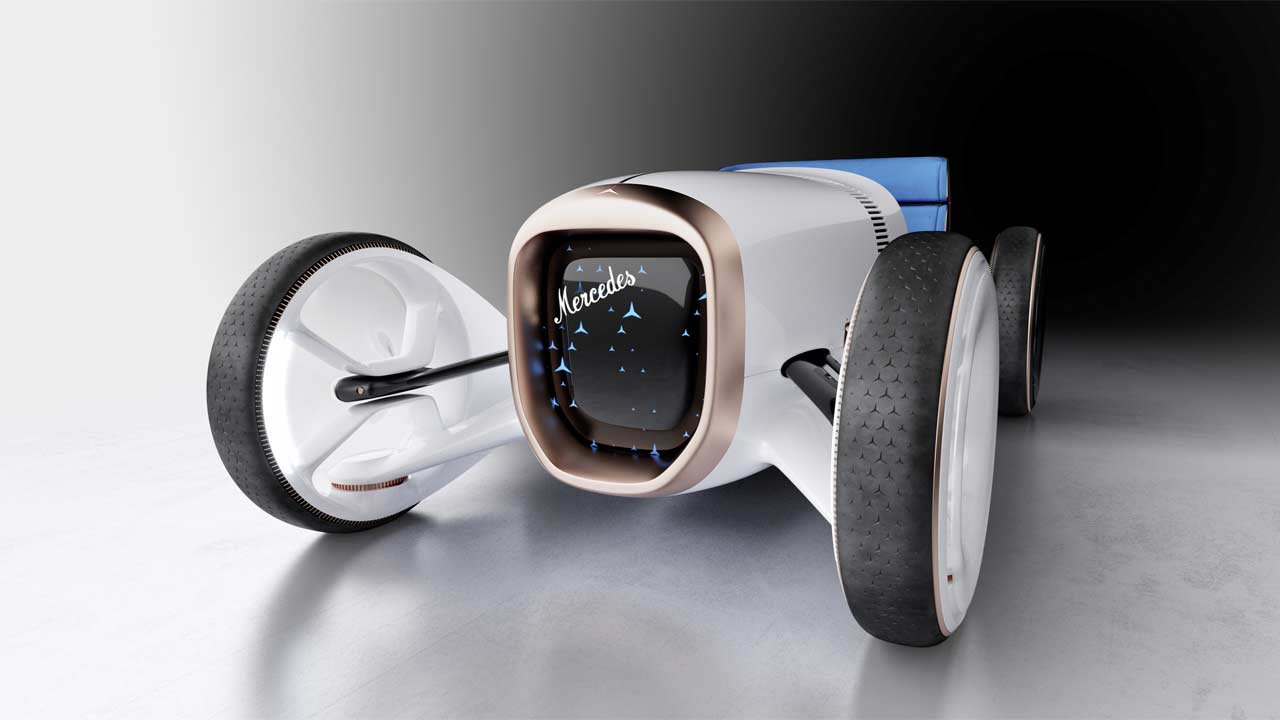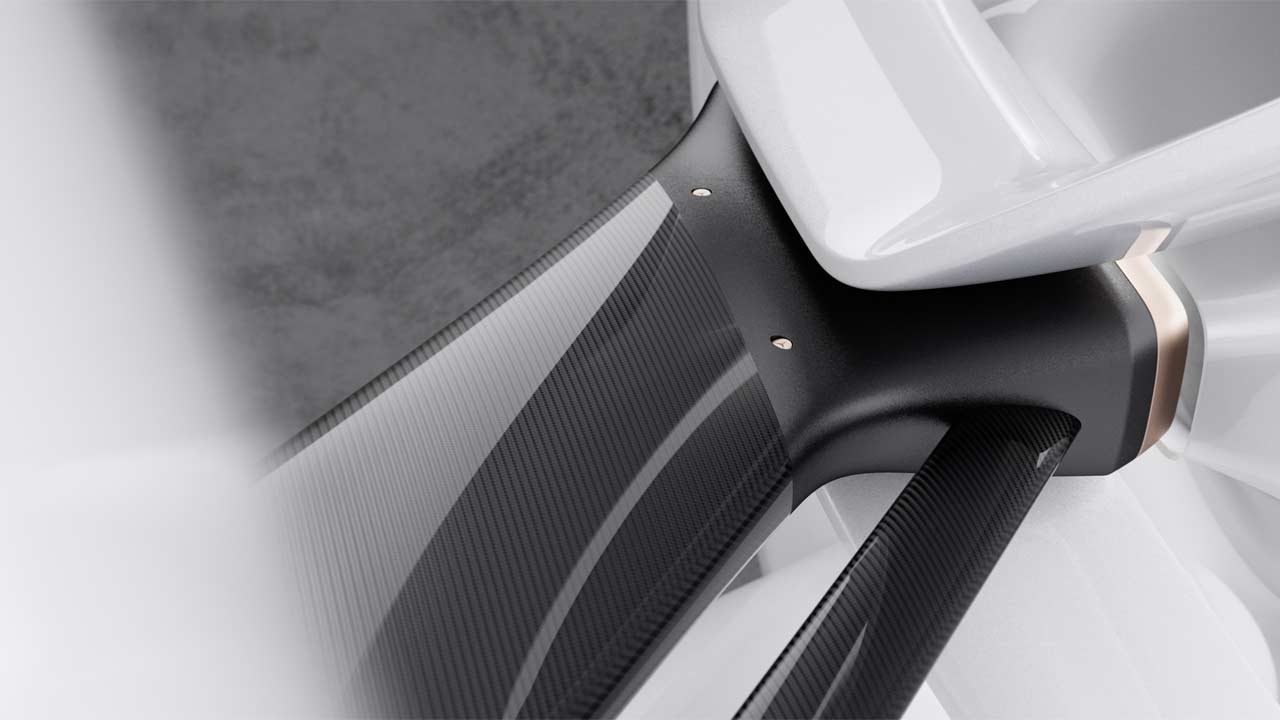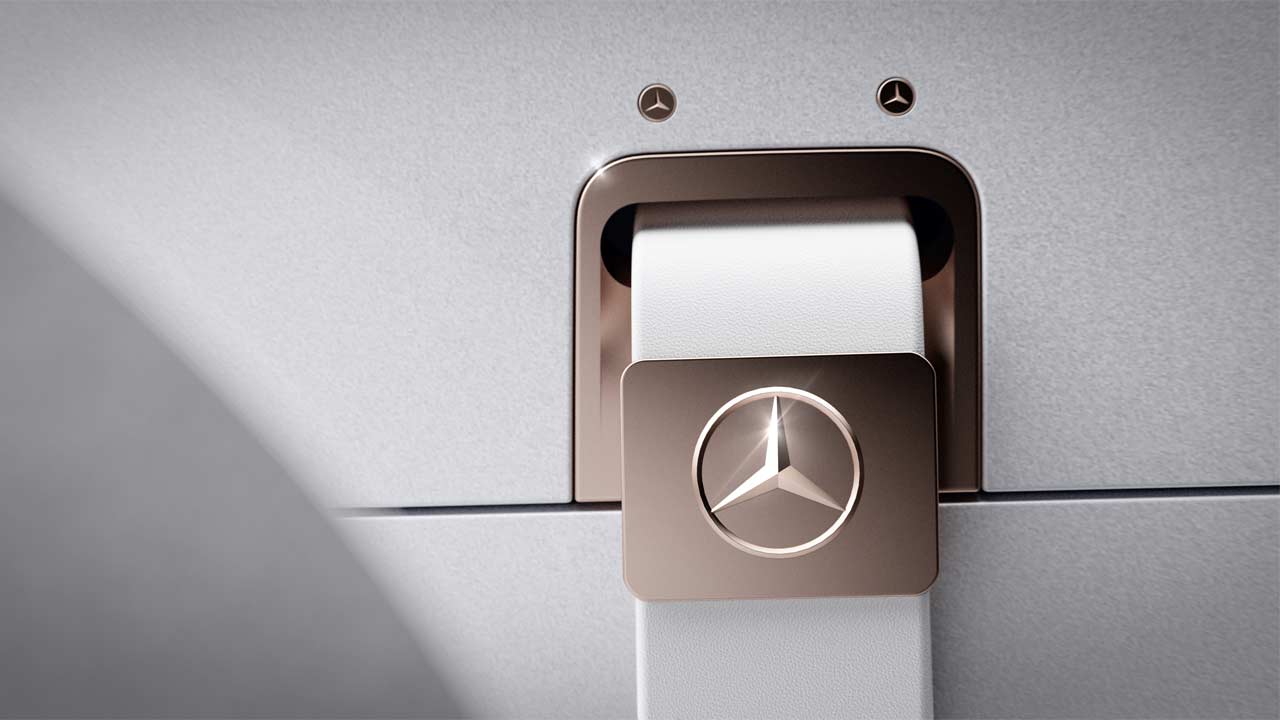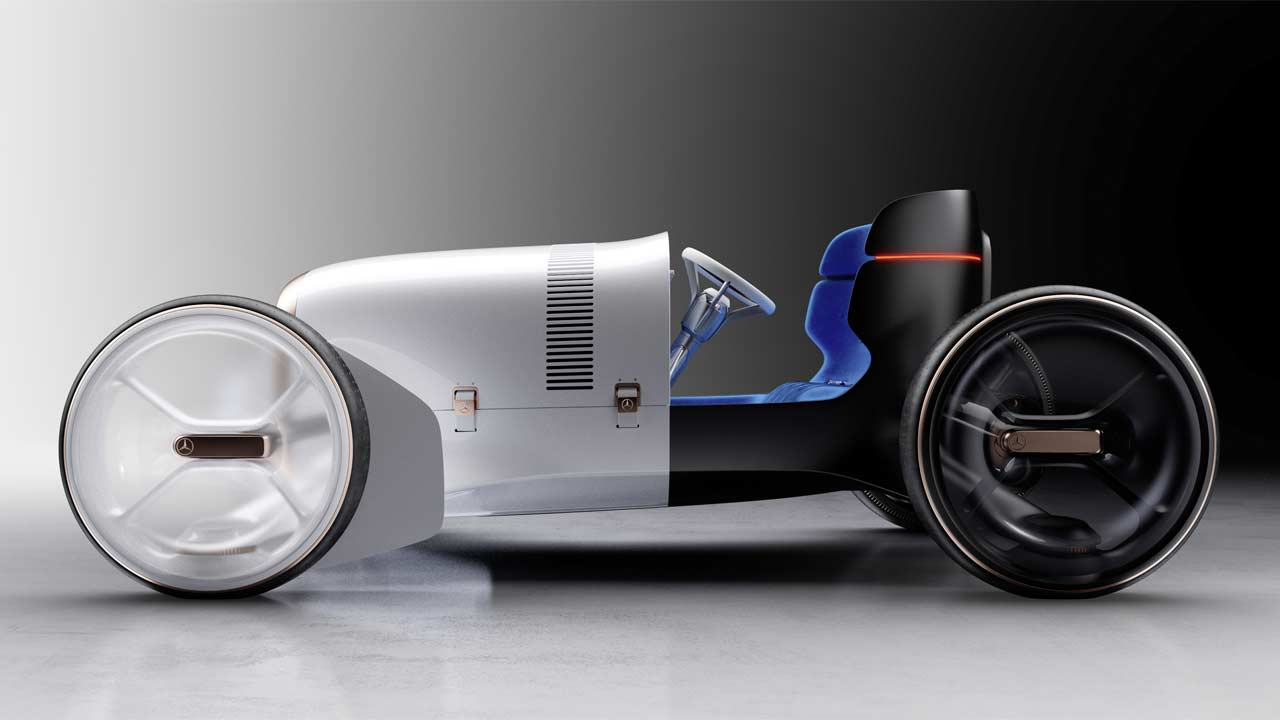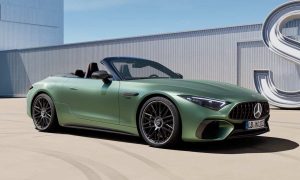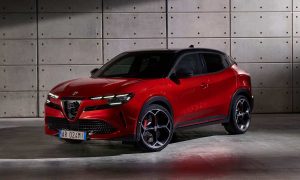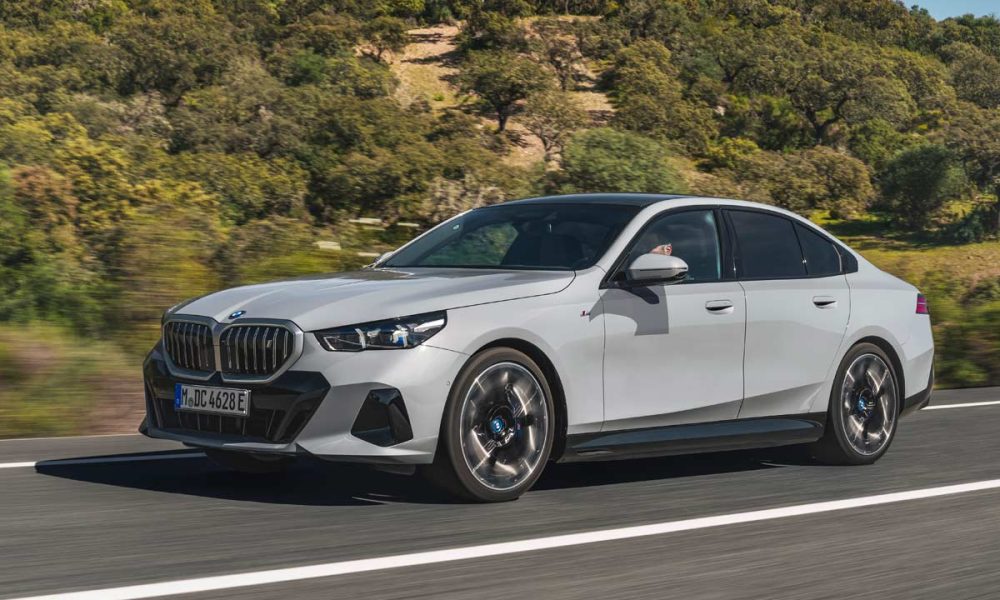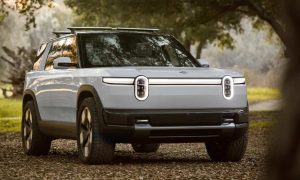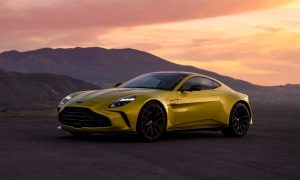Emil Jellinek was a wealthy German businessman and a huge fan of the then Daimler-Motoren-Gesellschaft (DMG). In the 1890s, DMG supplied Phoenix racing cars for his team “Mercedes”, named after his daughter.
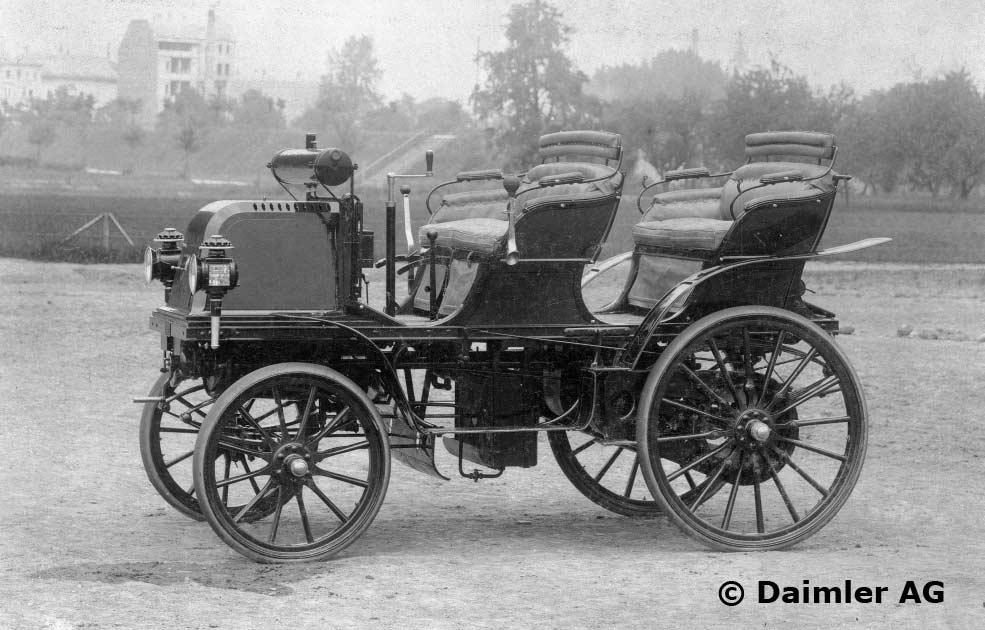 Daimler Phoenix
Daimler Phoenix
They developed 23 hp, a big number at that time. However, with their high center of gravity, short wheelbase and a 320 kg engine, the vehicles were difficult to handle. DMG factory driver Wilhelm Bauer was killed whilst driving one of the two cars when he collided with a barrier in the Nice – La Turbie (France) hill climb race.
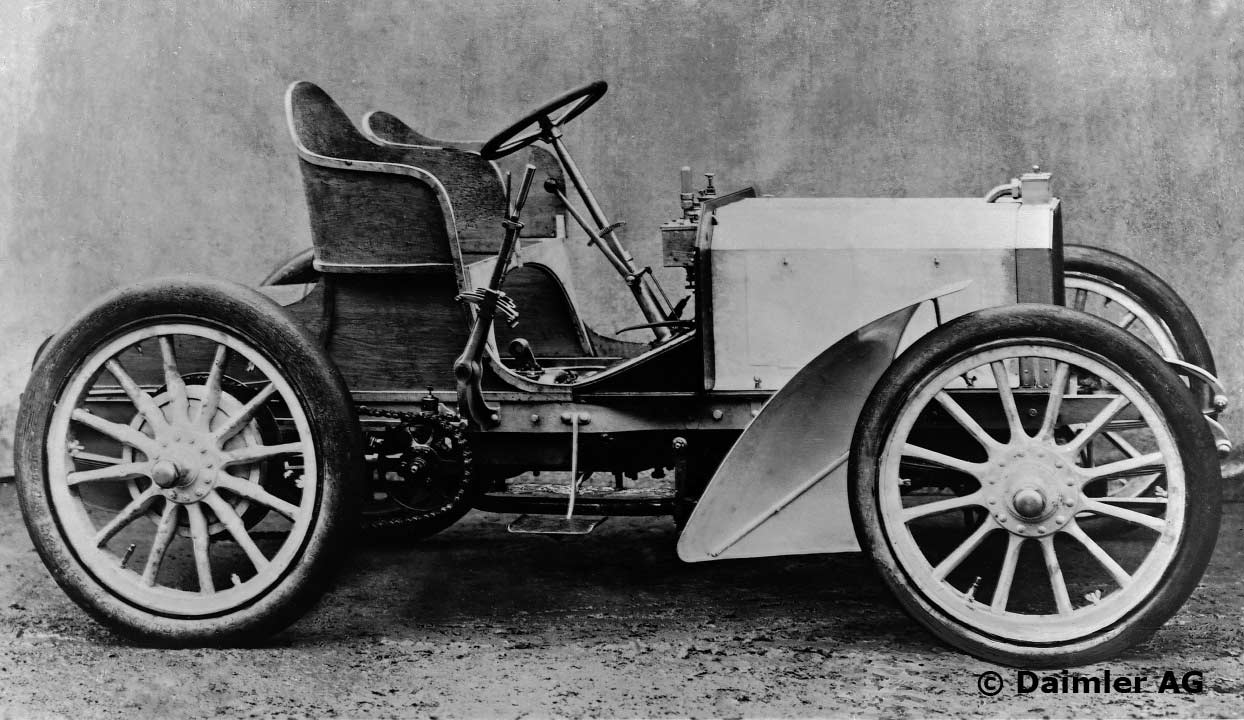 Mercedes 35 PS
Mercedes 35 PS
The outcome of the race made Jellinek commission a more powerful, lighter and easier-to-handle car from the engineer Wilhelm Maybach (yes, that Maybach). DMG came up with the Mercedes 35 PS, again, named after Jellinek’s daughter. It is regarded as the first modern automobile, and apparently, went on to dominate the competitions.
The Vision Mercedes Simplex pays homage to that car with today’s technologies. The retro “Mercedes” wordmark is digitally superimposed on the Black Panel/3D display, which is surrounded by a rose-gold frame. The color separation between the front and the rear section is also a nod to the historic example.
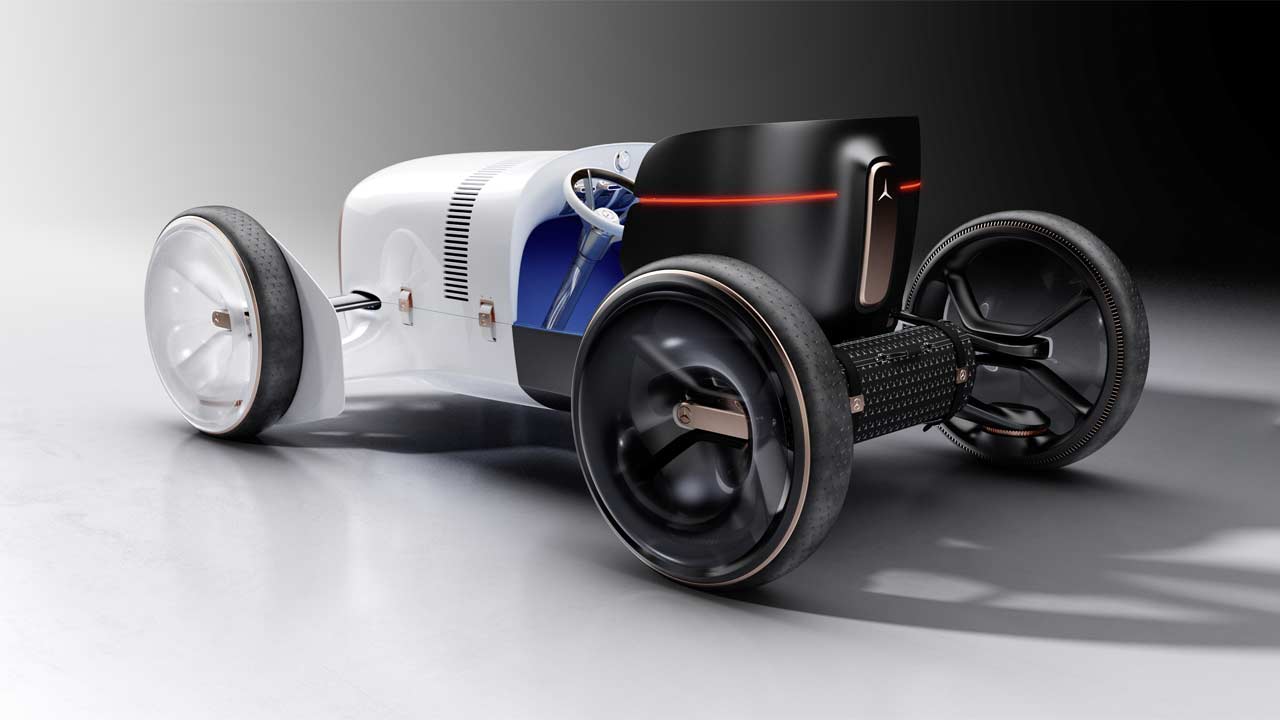
The transparent trims on the wheels apparently reflect lightness and efficiency, and interestingly, also gives an illusion of the vehicle in motion. The rear-end has a light bar separating the upper and lower section of the exterior shell. If you look closely, there’s also a leather bag which rounds off the tail end.
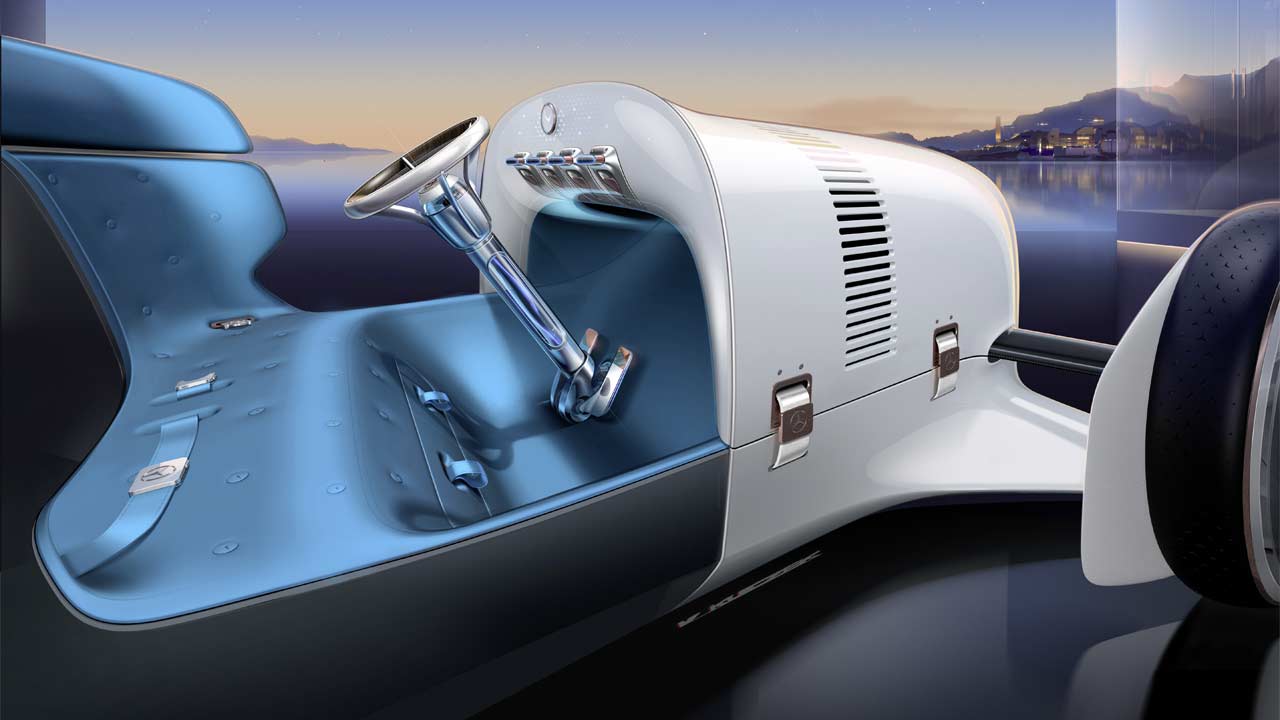
The inspiration for the interiors comes from the world of fashion, with the usage of high-quality openers for stowage compartments. The colors and trims, including the azure blue upholstery which transitions seamlessly into the footwell, is apparently inspired by the colors of the Côte d’Azur (French Riviera).
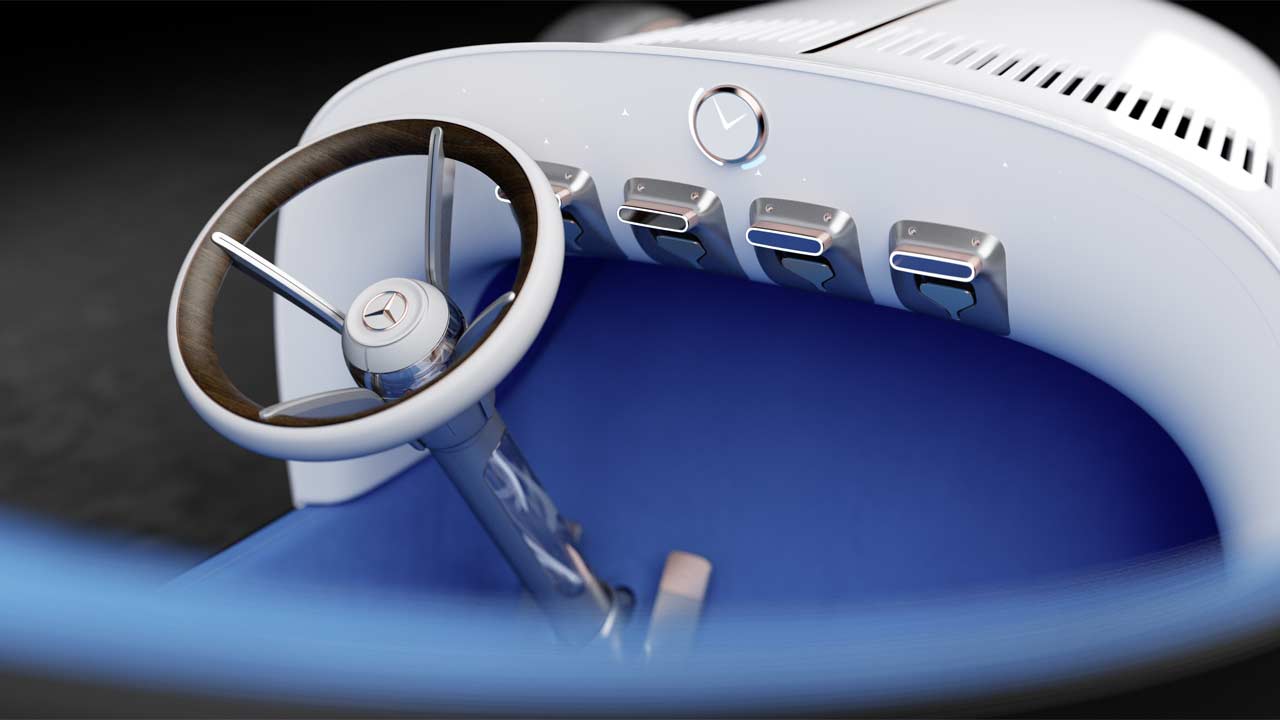
Rest of the vehicle has been kept fairly simple, with just a rose-gold colored instrument on which the dynamic digital content is projected. The right information is shown on the display at the right time; the speed, navigation instructions or vehicle information, for example. Other information is projected onto the star patterned instrument panel depending on the situation.
There’s no word on the technical bits or what Mercedes intends to do with the Simplex. According to the company, it’s a “sculpture embodying the heritage and future of the luxury brand”. Emil Jellinek and his daughter Mercedes (September 16, 1889 – February 23, 1929) are now part of the history books, however, it’s a name that we often see today.

Leave a Reply
Note: Comments that are unrelated to the post above get automatically filtered into the trash bin.
